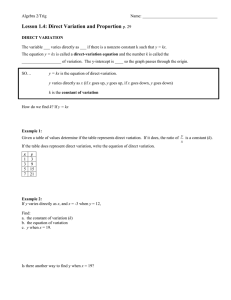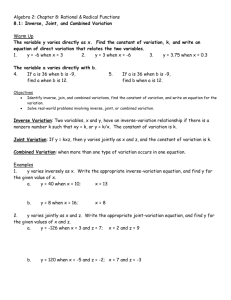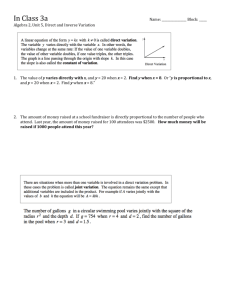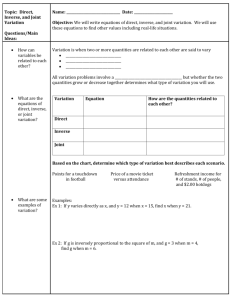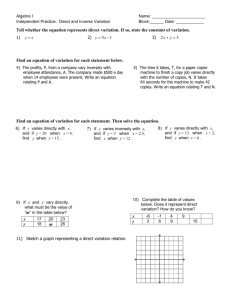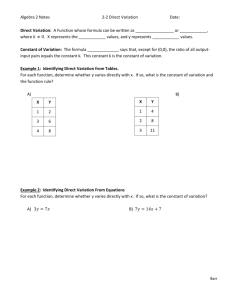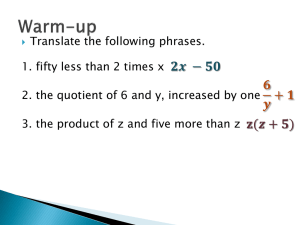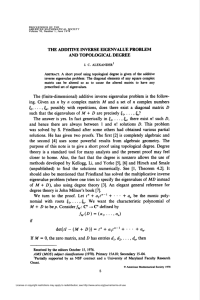1-1 Variables and Expressions
advertisement
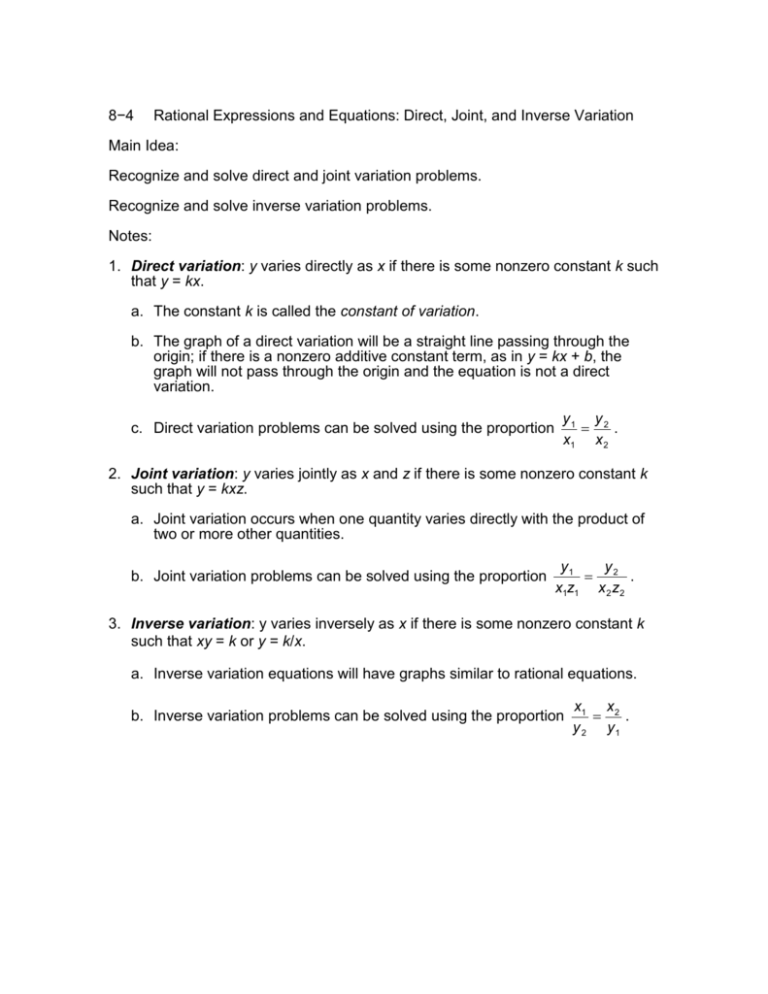
8−4 Rational Expressions and Equations: Direct, Joint, and Inverse Variation Main Idea: Recognize and solve direct and joint variation problems. Recognize and solve inverse variation problems. Notes: 1. Direct variation: y varies directly as x if there is some nonzero constant k such that y = kx. a. The constant k is called the constant of variation. b. The graph of a direct variation will be a straight line passing through the origin; if there is a nonzero additive constant term, as in y = kx + b, the graph will not pass through the origin and the equation is not a direct variation. c. Direct variation problems can be solved using the proportion y1 y 2 . x1 x 2 2. Joint variation: y varies jointly as x and z if there is some nonzero constant k such that y = kxz. a. Joint variation occurs when one quantity varies directly with the product of two or more other quantities. b. Joint variation problems can be solved using the proportion y1 y 2 . x1z1 x 2 z2 3. Inverse variation: y varies inversely as x if there is some nonzero constant k such that xy = k or y = k/x. a. Inverse variation equations will have graphs similar to rational equations. b. Inverse variation problems can be solved using the proportion x1 x 2 . y 2 y1
